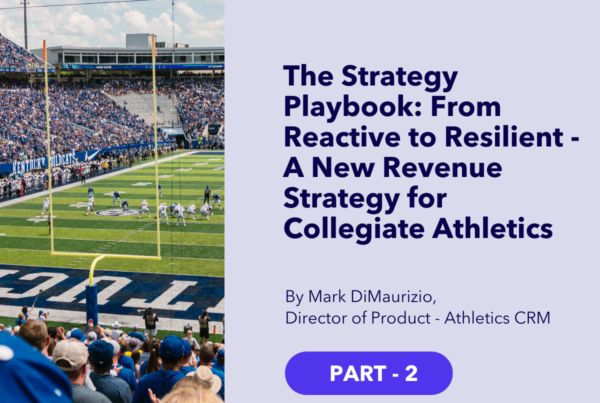PART 1
The Revenue Reckoning in College Athletics—What the House Settlement Means for Your Bottom Line
The House v. NCAA settlement marks a seismic shift in the economics of college sports. With Power Five programs now expected to allocate $20–25 million annually in athlete revenue sharing, the need for scalable, sustainable revenue growth has never been greater.
Athletic departments can no longer rely on traditional income streams alone. To thrive in this new environment, programs must take an offensive stance—leveraging data, automation, and operational agility to drive new revenue from ticket sales, fundraising, sponsorship, and game-day operations.
“Affinaquest’s technology has allowed us to rethink how we approach fan engagement and revenue generation. Their innovative tools and strategic support are critical to how we compete and grow in today’s collegiate athletics environment.”
– Ayo Taylor-Dixon, Deputy Athletics Director – Strategic Communication, San Diego State University
The Financial Reality Post-House v. NCAA
Historically, the college athletics business model has centered around a few core pillars: ticketing, donor giving, corporate sponsorships, and media rights. While these still matter, they no longer offer the margin for error they once did.
The House settlement introduces a recurring cost structure that demands proactive planning and smarter execution. Athletic departments are now asking:
- How do we increase ticketing revenue without pricing out fans?
- How can we grow donor engagement without expanding staff?
- What tools allow us to forecast revenue and act in real time?
This isn’t a temporary adjustment—it’s a structural reset.
The Hidden Risks of Inaction
Some departments may be tempted to meet these new financial demands through cuts or deferred investments. But that approach brings significant risk:
- Roster cuts can trigger Title IX compliance issues and alumni backlash.
- Degrading the fan experience reduces lifetime value and future donations.
- Failing to evolve can result in lost recruits, reduced engagement, and falling behind competitors embracing NIL and data modernization.
Meanwhile, realignment, governance shifts, and the influx of private equity are reshaping the competitive landscape.
Standing still is not an option.
What Athletic Departments Need Now
To grow revenue in the post-House era, athletic departments must transform from reactive operators to proactive, performance-oriented organizations. That transformation requires:
- Integrated CRM systems to unify ticketing and donor data
- Predictive analytics to anticipate behavior and optimize outreach
- Fan and donor segmentation for targeted, personalized engagement
- Strategic sponsorship packaging informed by data, not guesswork
- Revenue forecasting tools that guide planning and budget allocation
Departments that adopt this mindset will be equipped to drive growth, retain fans, and stay ahead of shifting economics in college sports.
For over 25 years I’ve watched college athletics evolve—but nothing will reshape the business model quite like the House v. NCAA settlement. This isn’t just another policy shift. It’s a full-on financial reckoning—demanding new playbooks, smarter systems, and sharper execution from every athletic department in the country.
That’s why this three-part series matters.
Each installment of The Revenue Reset cuts through the noise and lays out what athletic leaders need to know right now—from the broader economic context to the strategic pivots that separate the contenders from the programs playing catch-up. You’ll get clear insights on where the pressure points are, what operational shifts are working, and how data is driving the next generation of revenue strategy.
Whether you’re in the business office, development, ticketing, or on the external team, this series was written for you.
Read it. Share it with your staff. Send it to your peers. It’s time to stop reacting—and start leading.
-DiMo
Coming Next: The Revenue Strategy Playbook
In Part 2 of this series, we’ll outline the exact strategies high-performing programs are using to scale revenue—fast. From CRM-driven ticket sales to data-powered fundraising campaigns, discover what it takes to compete in the new financial era of college athletics.
Read Blog 2: From Reactive to Resilient—The Playbook for Sustainable Growth
Is your program ready to lead in the Post-House Era? Fill out the form below to schedule a demo!




